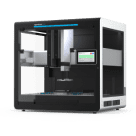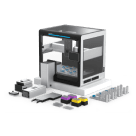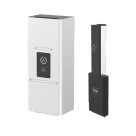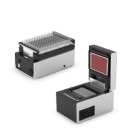Microbiome Nucleic Acid Extraction with ZymoBIOMICS Kit on OT-2
Microbiomics is a burgeoning field with implications for a wide range of topics in human health. Modern sequencing techniques can deliver rich and novel data but are constrained by DNA extraction methods that are difficult, time consuming, and, especially in microbiomics samples, prone to bias. Read More








